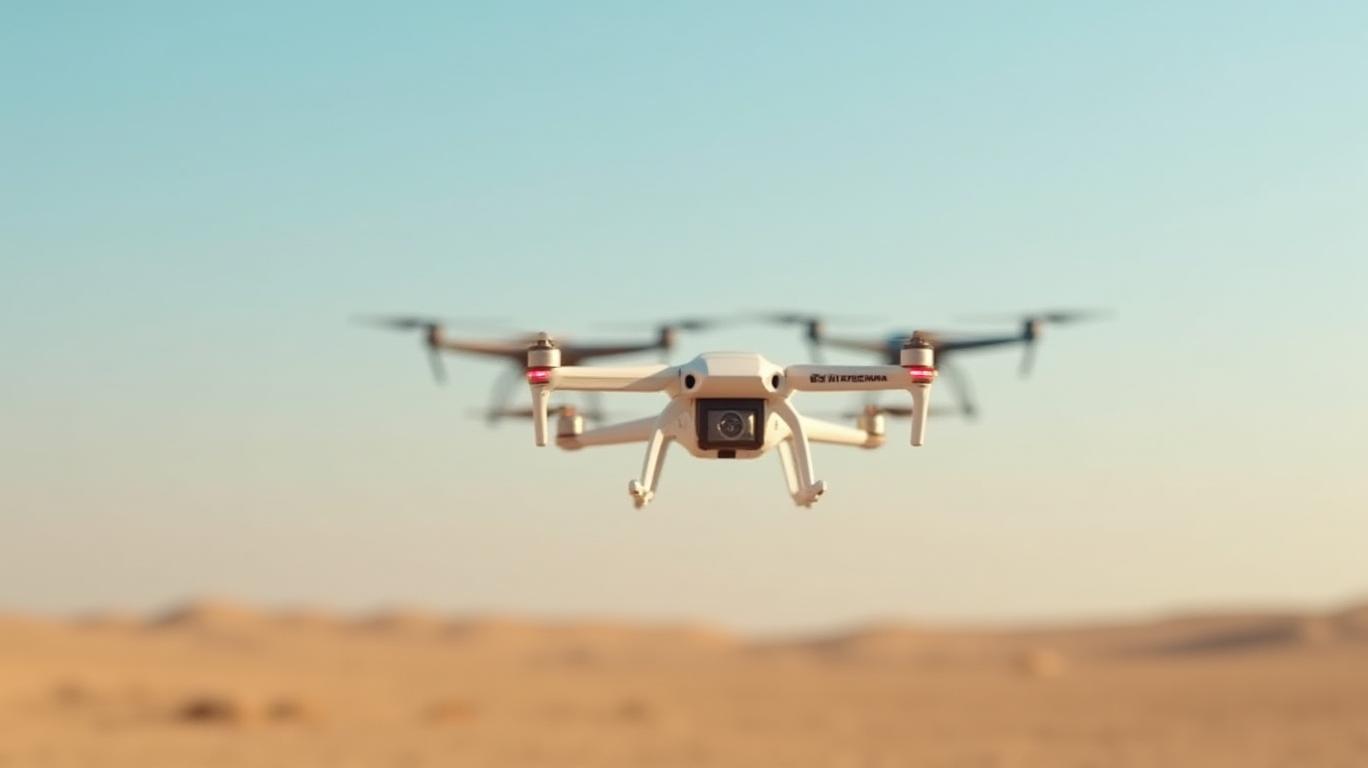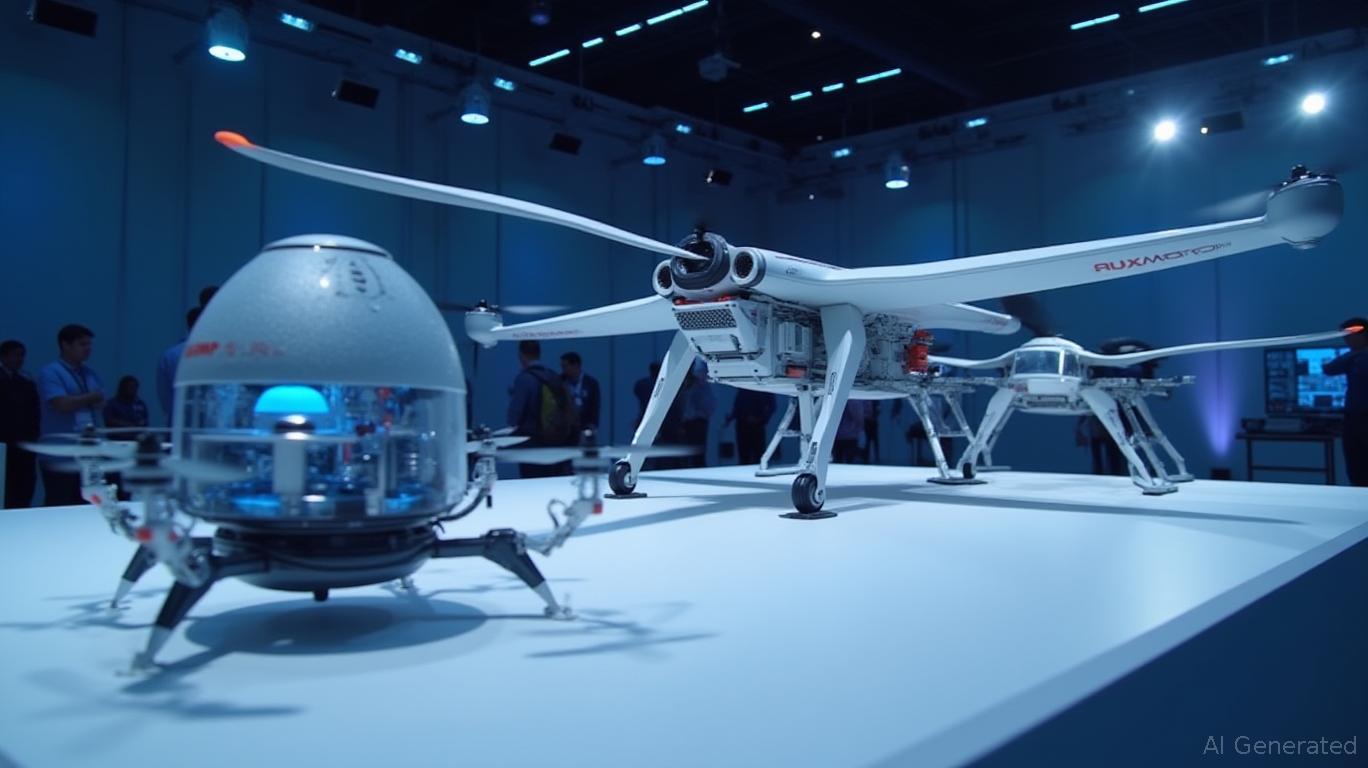Palladyne AI and Red Cat’s Autonomous Drone Milestone: A Strategic Leap for Defense and Beyond
Palladyne AI Corp. (NASDAQ: PDYN) and Red Cat Holdings (NASDAQ: RCAT) have achieved a breakthrough in autonomous drone technology with the successful completion of a cross-platform collaborative flight involving three heterogeneous drones. This milestone, announced in May 2025, marks a critical step toward advancing autonomous systems for defense, public safety, and commercial applications. The collaboration combines Palladyne’s AI-driven software with Red Cat’s advanced drone hardware, creating a system capable of real-time distributed detection, tracking, and situational awareness—while operating independently of centralized infrastructure.

Technical Achievement: Decentralized Intelligence Meets Military-Grade Hardware
The test demonstrated the integration of Palladyne’s Palladyne™ Pilot AI software with Red Cat’s drones, including the Black Widow (a U.S. Army SRR Program of Record winner) and the Teal 2. The system enabled three drones to autonomously detect and track both static and dynamic ground objects—such as vehicles and humans—across different regions of interest. Crucially, the drones operated using onboard edge computing, eliminating reliance on centralized servers or high-bandwidth communication. This decentralized architecture is a game-changer for military and defense applications, where connectivity is often limited or contested.
The software’s ability to fuse data from multiple platforms in real time and provide a unified operator interface reduces the cognitive burden on human operators. Palladyne’s CRO, Matt Vogt, called the test a “game changer” for U.S. military personnel, while Red Cat’s Geoff Hitchcock emphasized the system’s reliability and scalability.
Strategic Implications: Defense Contracts and Commercial Expansion
The partnership’s timing aligns with growing demand for autonomous systems in defense and civil sectors. For Palladyne, the test validates its AI software’s potential to become a force multiplier in military operations, enabling persistent surveillance and precision strikes. The software’s development, supported by U.S. Air Force contracts, is now commercially available, positioning Palladyne to capture a broader market.
Red Cat, meanwhile, leverages its hardware优势—such as the Black Widow’s adoption by the U.S. Army—to secure high-margin defense contracts. The $260 million SRR program win, which could expand to $400 million with spare parts and training, forms the backbone of Red Cat’s 2025 revenue guidance of $80–120 million. The integration of Palladyne’s AI software into its drones further enhances their appeal for ISR (intelligence, surveillance, reconnaissance) missions, where autonomous collaboration is critical.
Market and Financial Reactions: Investor Optimism and Analyst Upgrades
The collaboration’s announcement triggered a 30% surge in Red Cat’s stock, while Palladyne’s shares rose over 11%. Analysts at Ladenburg Thalmann upgraded Red Cat’s price target to $9 from $4, citing its SRR win and the partnership’s potential to expand into commercial markets like infrastructure inspection and logistics. Retail investors flocked to both stocks, with Red Cat becoming a top trending symbol on platforms like Stocktwits.
Despite short-term financial challenges—Red Cat reported a $25.75 million net loss for the first half of 2025 due to operational retooling and R&D investments—the companies are prioritizing long-term growth. The halt of Teal 2 production to focus on the Black Widow and SRR contract delivery underscores this strategic pivot.
Risks and Challenges: Scaling and Uncertainty
The path forward is not without hurdles. Both companies face risks, including regulatory approvals for commercial applications, execution delays in scaling production, and market adoption uncertainties. Palladyne’s cash reserves of $40.1 million as of December 2024, alongside recent capital raises, provide a cushion. However, achieving profitability remains a near-term challenge, with Red Cat projecting breakeven by 2026.
Conclusion: A Paradigm Shift in Autonomous Systems
Palladyne and Red Cat’s collaboration represents a pivotal moment in autonomous robotics. The successful three-drone test not only advances military capabilities but also opens doors to commercial markets, where autonomous systems can enhance efficiency in logistics, construction, and emergency response.
With the SRR contract’s $260–$400 million potential, Red Cat’s stock surge, and Palladyne’s AI software now commercially deployable, the partnership is a strategic win-win. For investors, the duo offers exposure to a fast-growing sector with dual-use applications. While execution risks remain, the technical and financial milestones to date suggest that this collaboration could redefine the landscape of autonomous systems—positioning both companies to capitalize on a market expected to exceed $50 billion by 2030 in defense and civil sectors combined.
In summary, the autonomous drone flight milestone is more than a technical feat—it’s a strategic bet on the future of robotics, with substantial upside for investors willing to endure near-term volatility.










